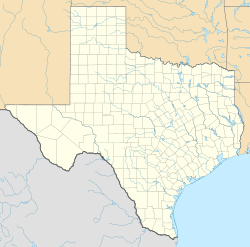Hyde Park (Austin, Texas)
|
Hyde Park Historic District
|
|
 |
|
| Location | Roughly bounded by Ave. A, 45th St., Duval St., and 40th St., Austin, Texas |
|---|---|
| Coordinates | 30°18′21″N 97°43′48″W / 30.30583°N 97.73000°WCoordinates: 30°18′21″N 97°43′48″W / 30.30583°N 97.73000°W |
| Area | 138.5 acres (56.0 ha) |
| Architectural style | Tudor Revival, Bungalow/Craftsman, Queen Anne |
| MPS | Hyde Park MPS |
| NRHP Reference # | 90001191 |
| Added to NRHP | June 29, 1990 |
Hyde Park is a neighborhood and historic district in Austin, Texas. Located in Central Austin, Hyde Park is defined by W. 38th Street to the south, W. 51st Street to the north, Duval Street to the east, and Guadalupe Street to the west. It is situated just north of the University of Texas and borders the neighborhoods of Hancock and North Loop.
Hyde Park traces its origins back to 1891 and is considered to be Austin's first suburb. The neighborhood was originally developed by Monroe Martin Shipe in 1891 as a "White Only" streetcar suburb with a large artificial lake, but it has since become one of the most densely populated areas in the city's urban core. Part of the neighborhood was listed on the National Register of Historic Places as a Historic District in 1990.
Located approximately twenty blocks from Austin's original town site, the area now known as Hyde Park was largely rural in character for much of the 19th century. The State Fair of Texas was held in the eastern sections of Hyde Park from 1875 until it was moved to Dallas in 1884. A portion of the State Fair's horseracing track is still reflected in the curved segment of 39th Street between Avenue F and Duval Street.
Established in 1891 by the Missouri, Kansas and Texas Land and Town Company, Hyde Park was marketed under the direction of Monroe Martin Shipe as an affluent suburb featuring large, majestic residences. Critical to the suburb's success was the establishment of an electric streetcar system. After the City Council awarded Shipe a franchise in 1890, his Austin Rapid Transit Railway Company built its first line on Congress Avenue, west on Sixth Street, and north on Rio Grande Street and Old Georgetown Road (now Guadalupe Street) to Hyde Park.
Hyde Park was initially marketed to Austin's elite in the 1890s, and Shipe achieved moderate success. The first houses built in the neighborhood were stylistic examples of late 19th-century domestic architecture. Many of them, such as the Oliphant-Walker House, were built in the Queen Anne style by locally prominent citizens. Noted sculptress Elisabet Ney was among the first to buy property in the area, which was heavily promoted as confirmation that Hyde Park was attractive to Austin's most talented and prestigious citizens. Ney built a small castle-style studio, named Formosa, in northwest Hyde Park that is now home to the Elisabet Ney Museum.
...
Wikipedia


